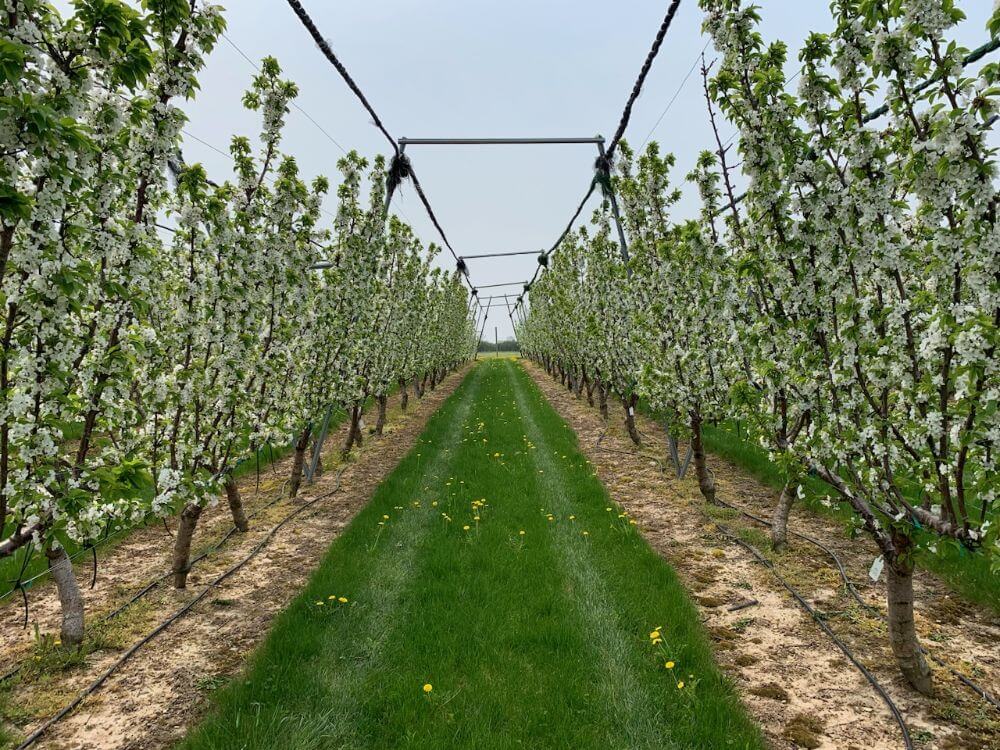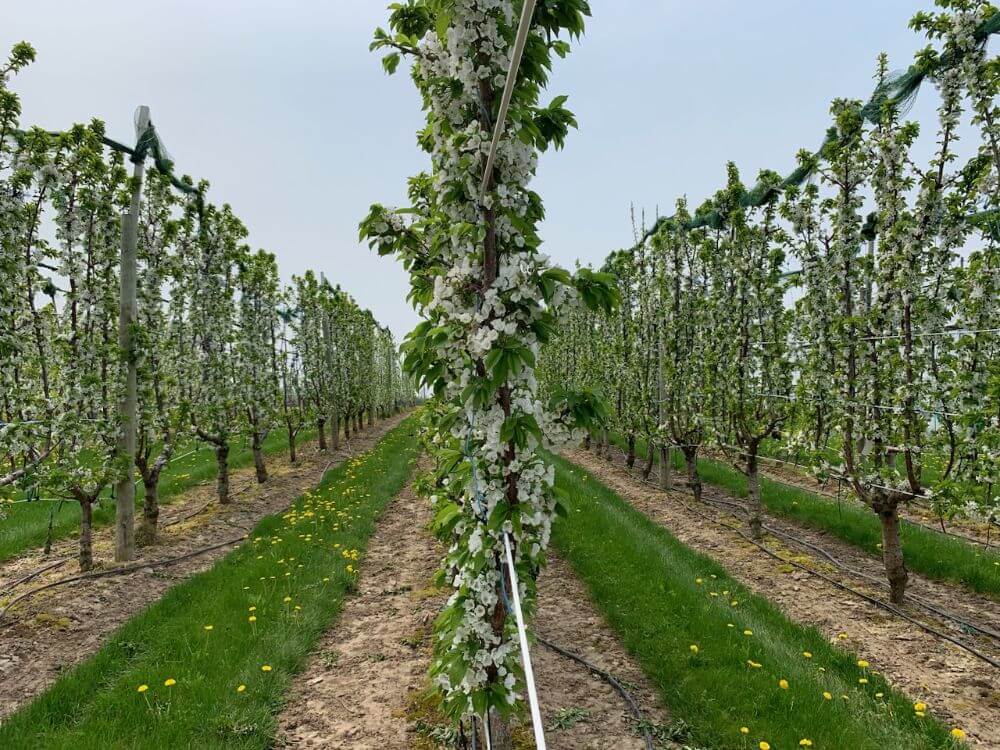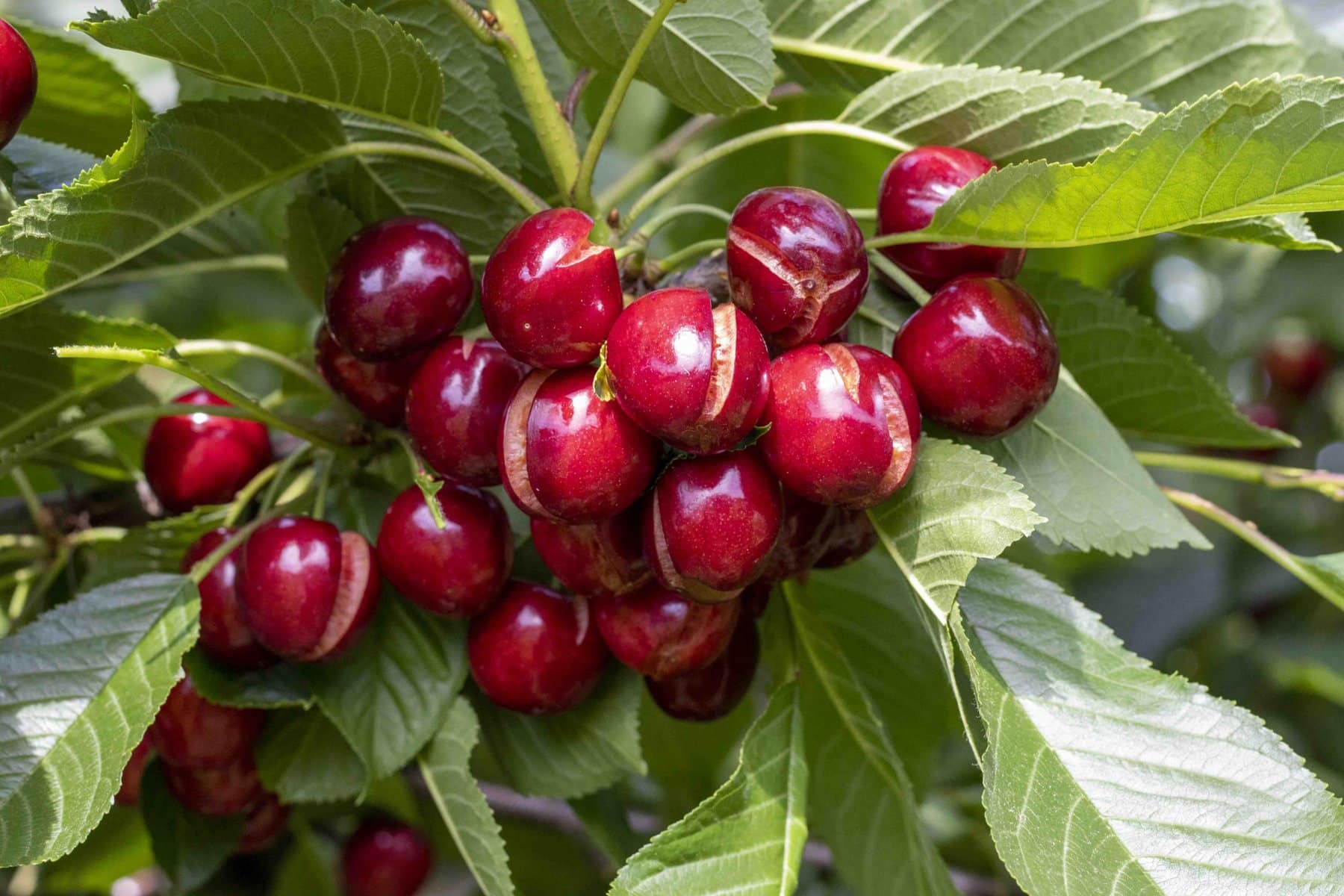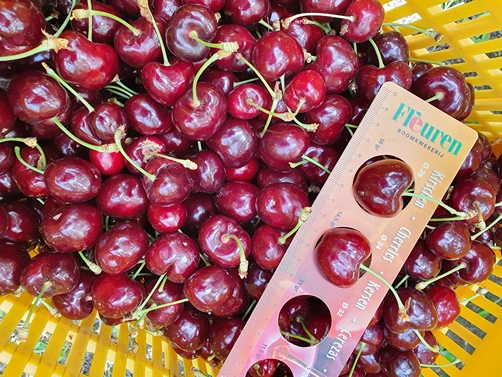
Gregory A. Lang - Department of Horticulture Michigan State University (US)
Cherry Times technical-scientific committee
Sweet cherry growers around the world are increasingly adopting trellised training systems that create a narrow, contiguous, planar “fruiting wall” canopy architecture. The benefits of such a radically redesigned orchard are significant, including:
- High light interception efficiency and light distribution porosity, with minimal shaded areas. This promotes premium fruit quality and ripening uniformity.
- Optimized canopy photosynthesis at lower light levels, an advantage for orchards in cloudier growing regions or with protective covering systems.
- Greater labor efficiency for hand harvest and pruning, and the potential to utilize mechanized hedging for some pruning tasks.
- Better spray coverage for pesticides, nutrients, and growth regulators, with less off-target drift.
- The potential to integrate orchard covering systems with the trellis structure, creating synergisms in climate modification investments and engineering.
- The ability to utilize narrow row covers to protect from rain and hail while minimizing the trapping of excessive heat during fruit ripening.
- The stability of the canopy conferred by the trellis can reduce wind-bruising of fruit, particularly important for bi-colored cherries.
- Optimized adoption of new technologies for canopy sensing, imaging, and mapping to acquire more precise data for better decision-making in balancing crop loads with canopy leaf area.
- The potential to utilize canopy sensing data and images for technology-driven new equipment such as “smart” sprayers with arrays of individually-activated nozzles that only apply products when and where needed, or mechanisms that selectively thin dense flower clusters, etc.
- The potential to utilize sprayer-applied pollen in springs when poor weather limits insect-pollination or compatible pollinizer bloom overlap.
Planar sweet cherry canopies can be trained as single vertical walls or dual angled (“V”) walls, all requiring a multi-wire trellis for more precise canopy orientation.

Lightweight, high tensile plastic wire has been shown to reduce the potential for rubbing-induced bacterial canker infections in trellises compared to galvanized steel wire (as has rain-protective orchard covering systems). There are essentially four general methods to train sweet cherry trees to achieve the basic narrow canopy structure for single vertical or dual angled planar orchards:
- Super Slender Axe (SSA): must utilize trees on precocious dwarfing rootstocks and impose extensive severe annual pruning, with some potential for hedging. Single or dual leader trees are planted at very high to high densities with a 2- to 4-wire trellis, respectively, with the vertical leader(s) serving as permanent structure, and all horizontal-growing lateral fruiting branches are renewed annually. Fruiting is primarily from non-spur flower buds at the base of the previous season’s lateral shoot growth.
- Trident (TRI) or Palmette (PLM): must utilize trees on semi-dwarfing to vigorous, preferably precocious, rootstocks, with some potential for hedging. Initial pruning creates a 3- to 5-leader (in proportion to rootstock vigor) candelabra-shaped tree with a 2- to 4-wire trellis, with fruiting on a mix of spurs and periodically-renewed lateral shoots arising from each leader.
- Upright Fruiting Offshoots (UFO, also known as Guyot or Planar Cordon): can utilize trees on precocious rootstocks with a wide range of vigor, with good potential for hedging. Single or dual leader trees are planted at medium to high densities with a 3-wire trellis, with the leaders bent horizontally to create 1-2 permanent cordons on the bottom wire, from which upright fruiting offshoots grow vertically at a consistent 20 cm spacing. The fruiting offshoot number should vary in proportion to rootstock vigor and are renewed every 6-8 years. Fruiting is primarily from spur flower buds on each upright offshoot; any lateral branches are removed annually.
- Espalier (ESP, also used to create a version of angled dual plane orchard known as Tatura Trellis): must utilize trees on semi-dwarfing to semi-vigorous rootstocks, with some potential for hedging. Single leader trees are planted at high to medium densities with a 5- to 7-wire trellis, and lateral shoots are promoted via scoring or growth regulator treatment to be trained permanently along each wire; the horizontal orientation promotes precocity. Fruiting is primarily from spur flower buds on each lateral branch, with most new shoot growth removed annually.

We developed and have been refining the UFO planar canopy for nearly 25 years now, utilizing sweet cherry’s natural growth habit traits of apical dominance and acrotonic vigor to precisely fill vertical, narrow orchard space with light-efficient, renewable fruiting structures (see illustrations).
This technique can be adopted to rootstocks of any vigor, since it utilizes the concept of proportional diffusion of vigor by varying the number of upright fruiting offshoots, and these simplified fruiting units readily refill their vertical space upon renewal, maintaining youthful fruit-bearing structure borne on permanent cordons. This contrasts with the difficulty of filling or renewing horizontal fruiting structure in central (or dual) leader-based trees if “blind wood” or gaps occur in the canopy.

Cherry Times - Tutti i diritti riservati















